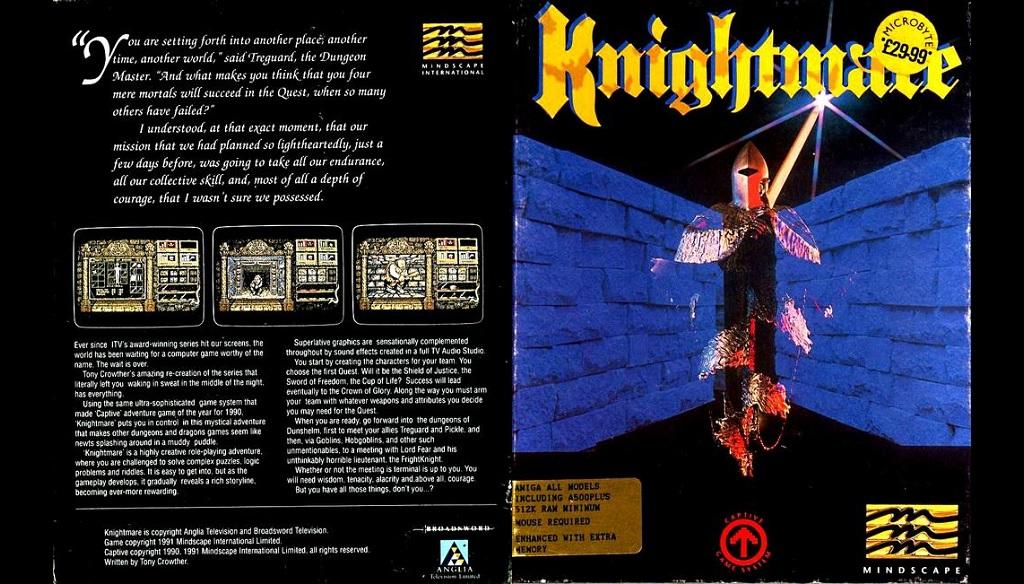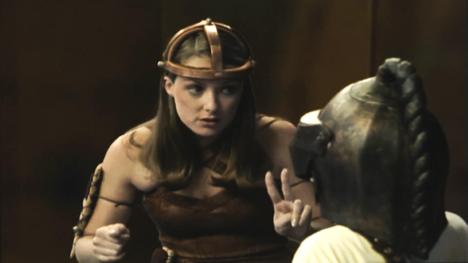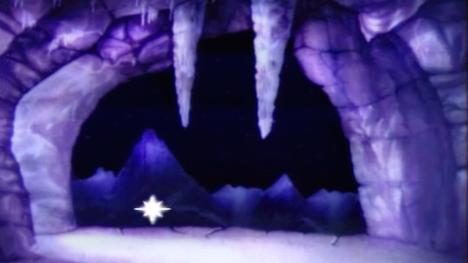The second Knightmare computer game was written by Tony Crowther and published by Mindscape in 1991 for the Amiga and the Atari ST.
Ever since Knightmare hit our screens, the world has been waiting for a computer game worthy of the name. The wait is over.
Tony Crowther's amazing re-creation of the series has everything. Using the same ultra-sophisticated game system that made "Captive" (adventure game of the year 1990), 'Knightmare' puts you in control in a mystical adventure where you are challenged to solve complex puzzles, logic problems and riddles. You will need wisdom, tenacity, alacrity, and, above all, courage.
- Game Type: RPG
- Players: 1
- Compatibility: 1Mb
Play the game
Play the game, via GamesNostalgia.
Manual
The game materials included a 28-page manual.
DownloadMindscape game manual (5.83MB)
Hints
On the woodland section of Level 1, use the spade to help you find five apples. Take these apples and throw them at the quest shield that hangs on the wall. Make each character consume two rabbit pies from the inventory screen. You should now find that your hit points never decrease.
If you need more help, we have a walkthrough by Alex van Kaam.
DownloadMindscape game walkthrough (41.5kB)
Magazine coverage
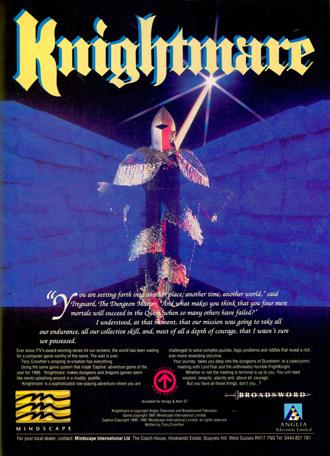
The One, 1991
What made Captive so unusual were the thousands of levels randomly generated by the computer following a set of rules. For Knightmare, Tony [Crowther] has opted to handcraft the levels, allowing for a narrative flow and for the problem-based nature of the game.
While this is a completely different type of game, players of Captive will find that there are some elements they'll recognise, such as the use of water and the ability to push certain walls to reveal hidden chambers and corridors. Another new feature is the ability to communicate with monsters.
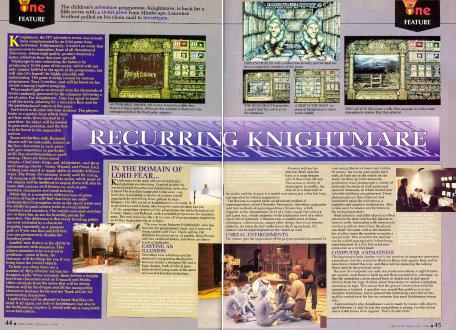
CU Amiga, 1992
Unlike Dungeon Master and its derivatives, Knightmare's monsters use some intelligence. If you run off and cower behind a door, don't expect the goblins or whatever to wait around forever, as they're likely to wander off and hide, launching a devastating attack when you least expect it.
I love this game. It's taxing, whimsical and, unlike most RPGs, it actually has a sense of humour. I wonder whether the use of the TV name is so wise, though? Most kids will find this too complicated and, let's be honest, not remotely like the TV series at all.
Amiga Format, 1992
Knightmare plays fast and hard. As dungeon romps go, few can match it for the continuous ferocity of its assault on your party's lives. Success in this environment really feels like an achievement, but failure is both frustrating and far more common.
In terms of a strict translation from TV show to computer game, Knightmare is far from a convincing success. As a highly polished game in its own right it is a definite success. A finely balanced affair, Knightmare continually pushes players harder and harder.
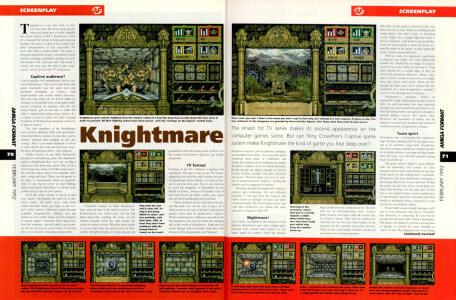
Special Reserve, 1993
This game is based loosely on the TV series of the same name and features the character Treguard who pops up from time to time to offer advice. The action takes place from the first-person perspective as your team explores forests and dungeons in their quest to kill Lord Fear. Along the way you'll encounter traps, puzzles, treasure and monsters which display the annoying habit of being more than sword fodder.
The four quests to complete before meeting Lord Fear will keep you occupied for quite some time. The control system is standard, with each character having his/her own set of control icons and inventory. If you liked Captive and generally enjoy RPGs, then you won't be disappointed with this.
User reviews
Most reviews praise the product but question the relevance to the television show.
James Chambers claims the Mindscape game is an 'underdog' of the Dungeon Master family tree. He sees it as 'the only serious interpretation of this difficult genre' by the early 1990s.
Paul Dale goes through the details of the game. He says it's a good idea to give players less information and let them work out how the mechanics work.
PC gaming journalist Richard Cobbett is less forgiving in a 2014 retrospective. "It feels like Crowther had a fantasy RPG in the works and slapped on a couple of references to help it sell," he says.
DownloadMindscape game reviews (1.04MB)
